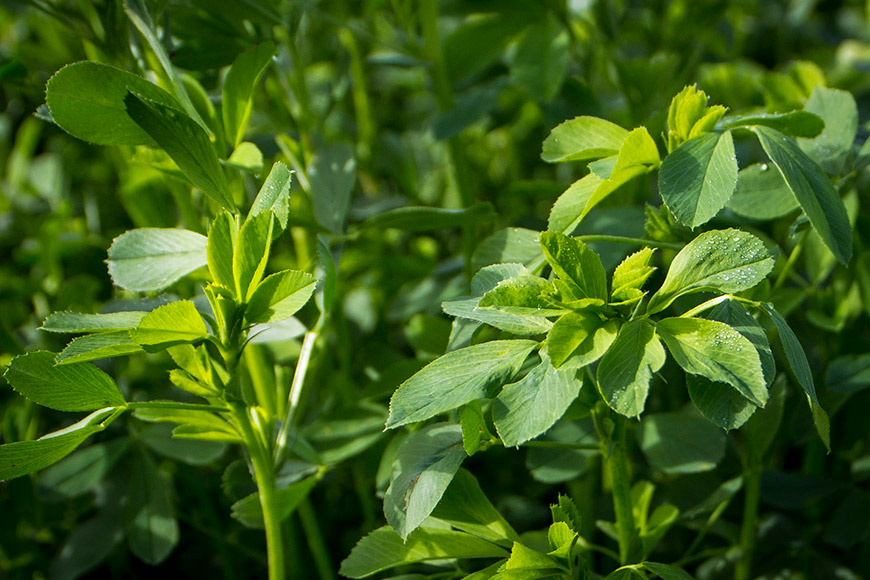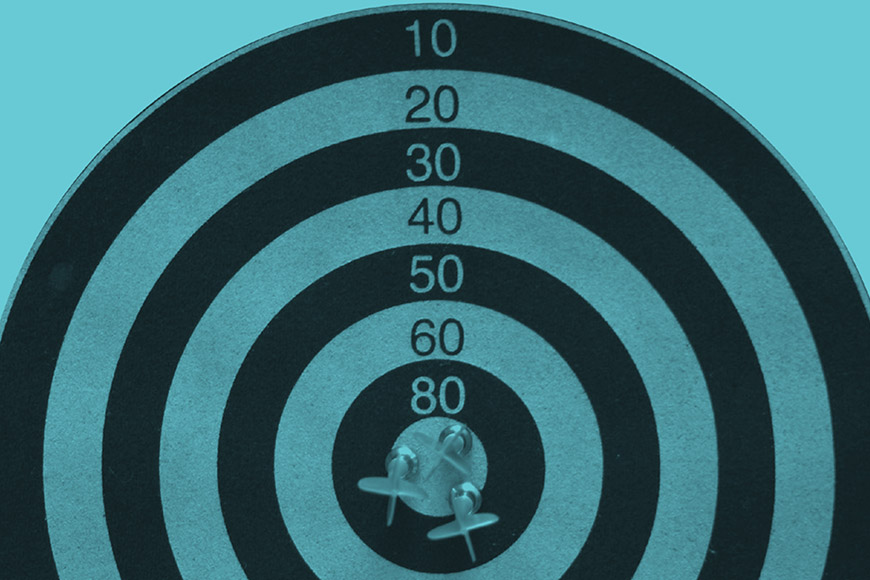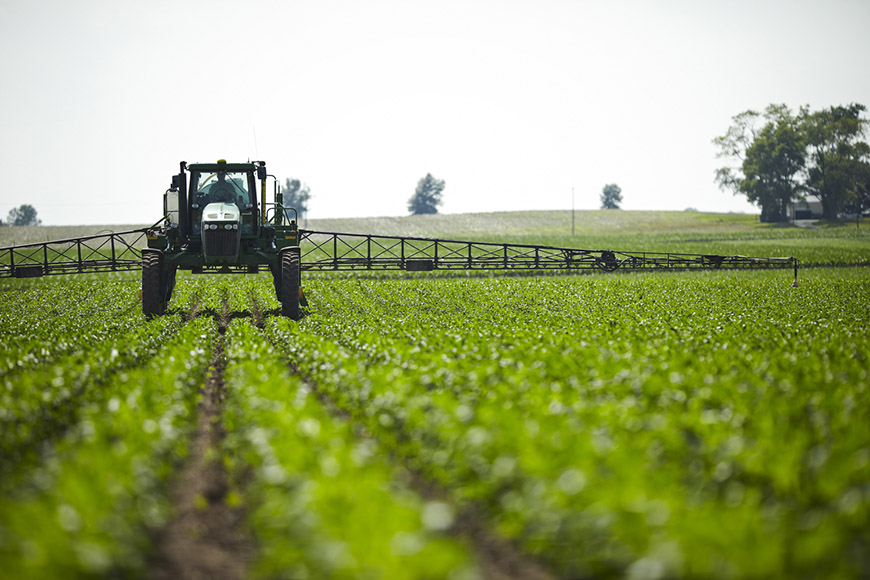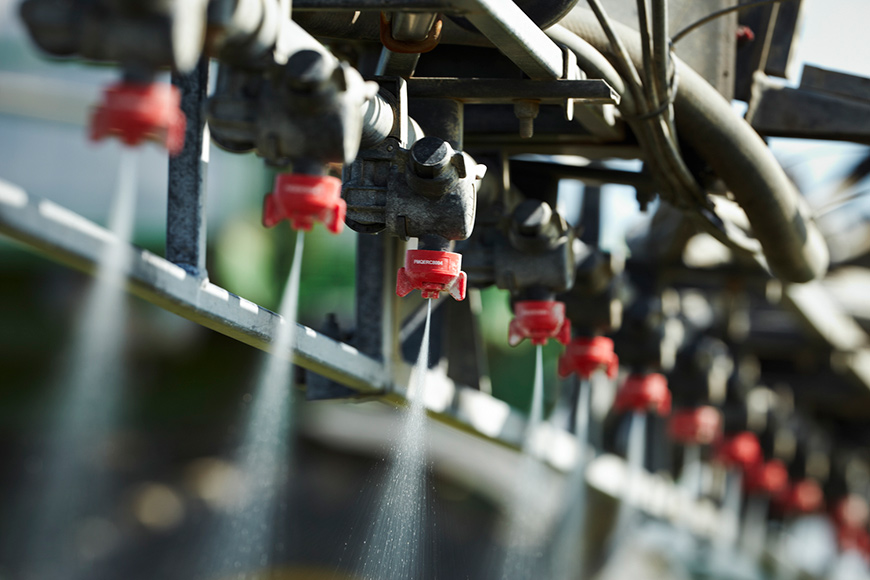Plan Now to Meet Alfalfa Production Goals

Late summer and fall management decisions — including weed control, herbicide programs and seed selection — can affect your alfalfa production next year. Take advantage of this postharvest time period to carefully consider your yield and management goals for next season.
Weed control: control alfalfa weeds in late summer and fall
Winter annual weeds start developing in alfalfa fields in late summer and early fall. Once these weeds get a foothold, they can have a yield-limiting and negative quality effect in spring. Traditional broadleaf alfalfa herbicides typically used in the spring should not be applied in the fall due to increased risk of winter injury.
Summer-seeded alfalfa planted into winter wheat often contains volunteer crop that can compete with alfalfa and require fall control. Spring seedings may also need scouting and an assessment of weed-control needs. Established alfalfa should also be evaluated for weeds, and glyphosate applications can be made in fall. Weeds present this fall are likely to be present in first cutting next spring and can reduce both yield and quality.Fall applications of glyphosate applied to alfalfa with Roundup Ready® Technology can help you control weeds that start their growth cycle during the fall. Controlling weeds using Roundup Ready Technology can help increase both stand density and forage yield and improve forage quality in the first cutting.
Herbicide programs: understand herbicide carryover risk to alfalfa
Herbicide carryover from previous crops is a growing concern for alfalfa seeding. Herbicides used to control difficult weeds in corn, soybean and wheat can still have activity that can stunt or even kill alfalfa. Unfortunately, herbicides do not distinguish between alfalfa seedlings and weeds. Herbicides used for season-long weed control in other crops can damage alfalfa the season after application. Always read and follow the herbicide label, including the footnotes. Date of application, herbicide rates and soil organic matter levels can all affect carryover herbicide risk. To control difficult weeds like waterhemp, the industry is increasingly relying on new products with longer residual activity.
Thin, uneven and stunted alfalfa can often be caused by possible herbicide carryover. Stands may eventually recover, but the anticipated yield of new seeding alfalfa is likely decimated. Plant stand loss may require reseeding once residual herbicide has dissipated.
Review your 2020 herbicide applications carefully to evaluate the risk factors of residual herbicide carryover for 2021. Plan your 2021 herbicide choices to minimize future risk to alfalfa seeding. Reduced tillage, soil organic matter levels, cooler soils and delayed application dates in northern regions can all delay the dissipation of herbicides. Potential damage can range from outright alfalfa plant death to sublethal suppressed growth and yield. Prior to seeding alfalfa, it’s well worth the time to review your herbicide labels and discuss your future herbicide programs with your agronomist.
Seed selection: get the right varieties for your acres
As you’re planning for next year and evaluating your forage needs, ask yourself, “What can I improve next year with my alfalfa production?” In addition to more yield and higher forage quality, harvest management flexibility might be a priority. HarvXtra® Alfalfa with Roundup Ready Technology offers the choice between maintaining current harvest for higher forage quality potential or delaying harvest for increased tonnage without sacrificing forage quality when compared to conventional alfalfa at the same stage of maturity.*
Coupled with effective management, genetics with great disease resistance make a difference, so consider whether new advances in alfalfa varieties can protect your crops from yield-limiting diseases. These include multipathogen, multirace anthracnose and multirace aphanomyces, with new varieties bred specifically to offer genetic resistance. Selecting varieties with the right disease resistance profile for your area can improve harvest options, yield and quality potential on your farm.
There’s a value proposition to every management decision you make. The trick is understanding which decisions will generate the most likely return on investment. As you look ahead to the 2021 spring season, consult with your local agronomist to customize product choices and best management practices for your operational goals.
*Because of factors outside of WinField United’s control, such as weather, product application and any other factors, results to be obtained, including but not limited to yields, financial performance or profits, cannot be predicted or guaranteed by WinField United. Results are based upon controlled test and field trials. Actual results may vary.
All photos are either the property of WinField United or used with permission.
Important: Before use always read and follow label instructions. Crop performance is dependent on several factors many of which are beyond the control of WinField United, including without limitation, soil type, pest pressures, agronomic practices, and weather conditions. Growers are encouraged to consider data from multiple locations, over multiple years, and be mindful of how such agronomic conditions could impact results.
© 2020 WinField United. WinField® is a trademark of WinField United.
HarvXtra® is a registered trademark of Forage Genetics International, LLC. HarvXtra® Alfalfa with Roundup Ready® Technology is enabled with Technology from The Samuel Roberts Noble Foundation, Inc.
Roundup Ready® is a trademark used under license from Bayer.






